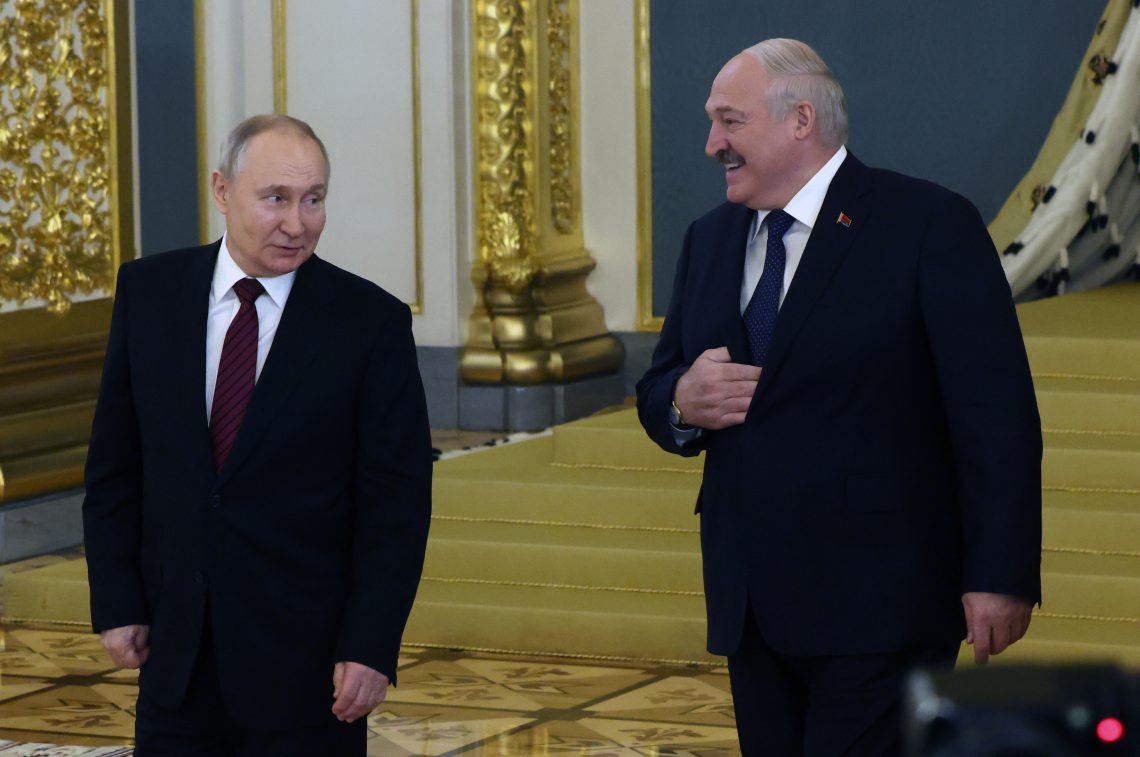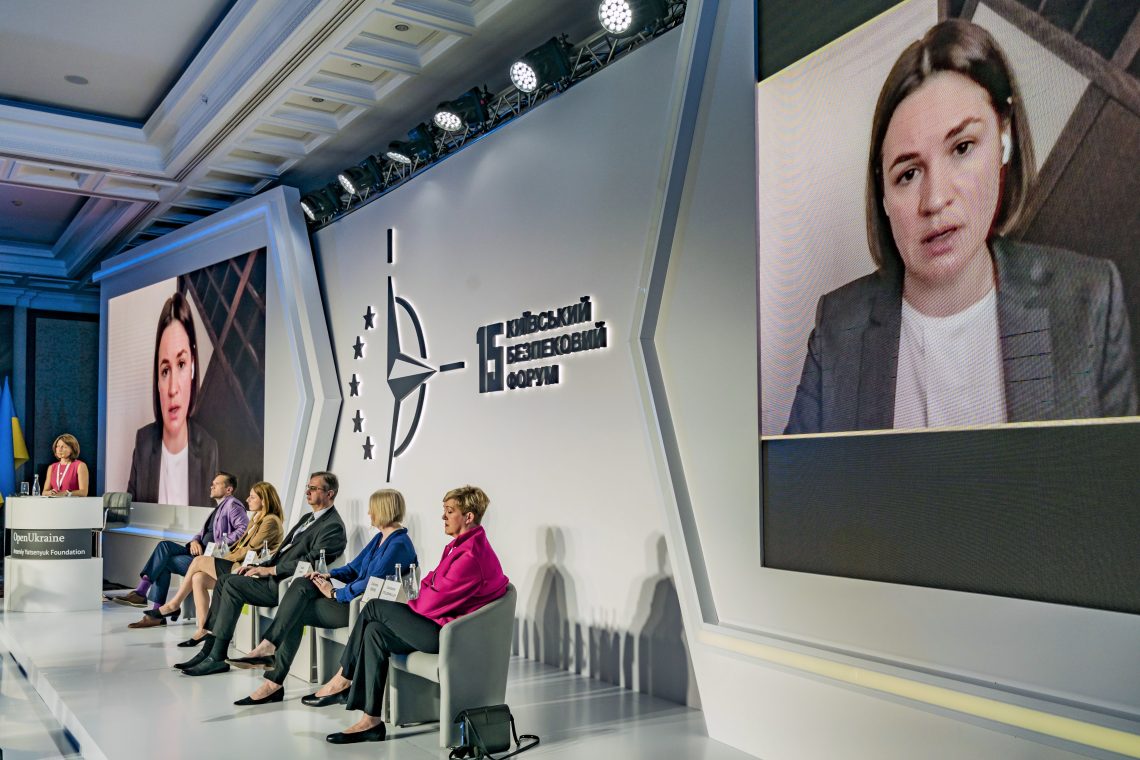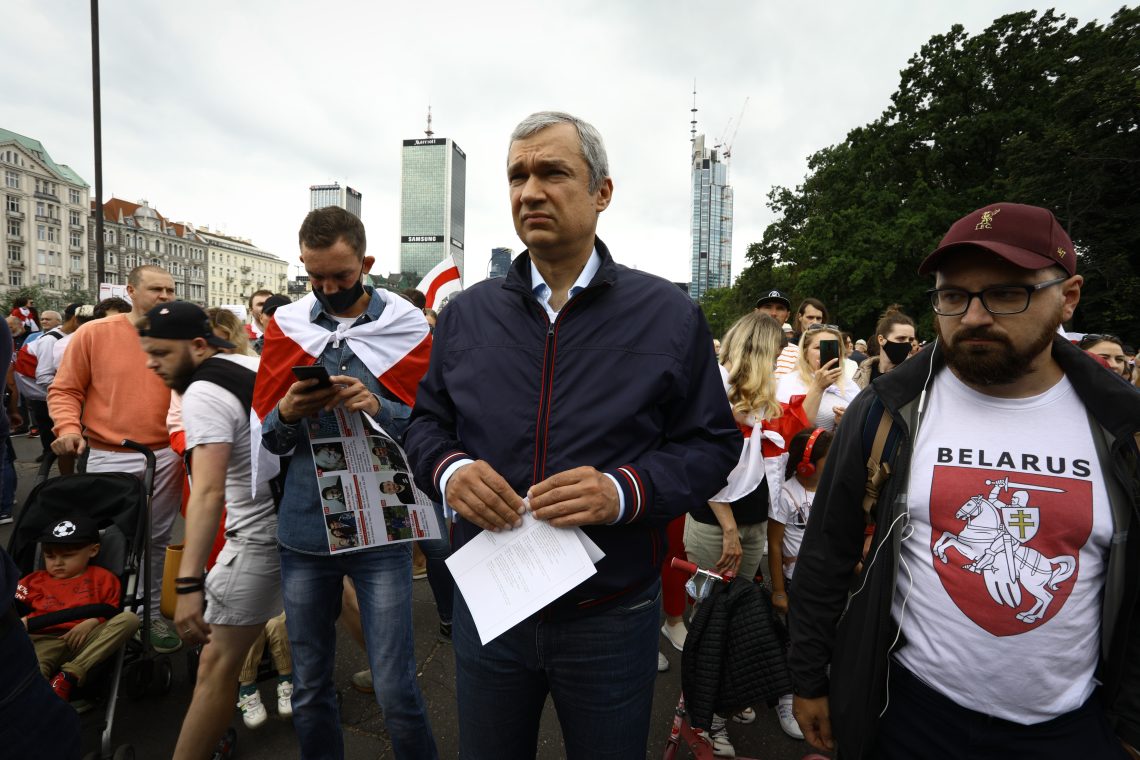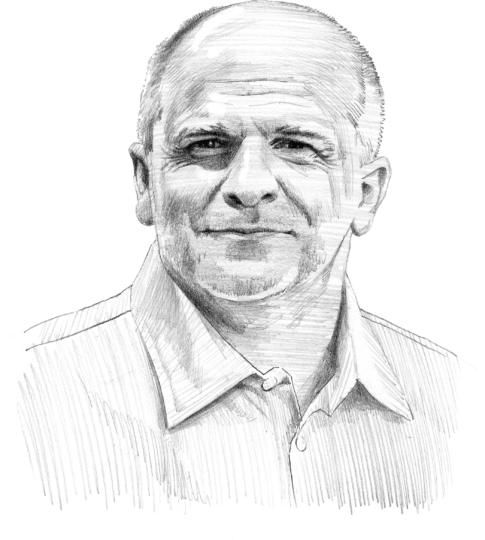Two Belaruses
Although Alexander Lukashenko has effectively surrendered Belarus’s sovereignty to Russia, a path remains for the democratic opposition in exile to restore independence.

In a nutshell
- Belarus’s importance, especially if it hosts Russian tactical nuclear weapons, will grow
- The illegitimate rule of Alexander Lukashenko depends heavily on Vladimir Putin
- Mr. Putin’s departure or defeat in war will create opportunities for democratic forces
Belarus has garnered plenty of attention recently, mostly due to President Alexander Lukashenko’s role in ending the rebellion led by Wagner leader Yevgeny Prigozhin and mediating negotiations with Moscow. However, Western public opinion, experts and politicians often overlook the strategic importance of Belarus, which lies in the heart of Europe. This disregard for the ex-Soviet republic of 9 million people is a mistake. The Belarusian issue is gaining momentum, especially because of Russia’s war on Ukraine, and it will evolve if President Vladimir Putin suffers battlefield defeats.
Understanding Belarus’s current predicament requires examining the peaceful revolution of 2020-21. Following the fraudulent presidential elections on August 9, 2020, Belarus experienced a wave of peaceful protests. The global media initially portrayed these protests in a positive light and compared them to other nonviolent revolutionary movements, which helped to significantly undermine President Lukashenko’s legitimacy. Although he managed to cling to power, it became evident that his position relied on President Putin’s support.
The Russian leader continuously maneuvers to keep Belarus from sliding away from Moscow’s orbit. Effectively, Belarus has become the last of the former Soviet republics with no clear prospects for definitive independence from Russia.
The events of autumn 2020 also led to a wave of terror targeting the opposition and pro-democracy groups. As a result, nearly 2,000 political prisoners were incarcerated, with an additional estimated 3,000 individuals detained on fabricated criminal charges, essentially punished for their social and political activities. Many of these individuals remain imprisoned.
These events spurred an exodus of Belarusian activists and politicians, spearheaded by opposition presidential candidate Sviatlana Tsikhanouskaya, and resulting in the formation of a group of Belarusian authorities in exile. Many in the democratic world recognize these individuals as the legitimate leaders of the Belarusian people. Moreover, the Belarusian protests strengthened the identity of Belarusian society and its distinctiveness from Russia, but they also eroded a substantial portion of the country’s sovereignty and political independence from Moscow.

Captive Belarus
When discussing Belarus today, it is crucial to differentiate between the formal role of President Lukashenko and the Belarusian authorities in exile.
The political separation between Belarus and Russia is a pretense. Belarus is deeply involved in Russia’s war against Ukraine, serving as a launching pad for attacks on Ukrainian territory. Following the start of Russia’s full-scale invasion on February 24, 2022, Belarus became a key military base for the Kremlin’s assault on Kyiv. In the future, President Lukashenko may face accusations as a war criminal, akin to the charges levied against President Putin.
Considering Mr. Lukashenko’s regime as independent from the Kremlin is also a mistake. He should be viewed more as the governor of the Russian state of Belarus, overseeing an entity that retains remnants, albeit rapidly diminishing, of nationhood. While the West does not recognize Mr. Lukashenko as the president of Belarus, he remains the figure who wields power in the country.
One of the ways that Russia is ensuring its gradual absorption of Belarus is through the deployment of weapons of mass destruction on Belarusian soil. President Lukashenko’s recent decisions suggest that these weapons may soon be stationed in four new locations across the relatively small country, including two near the border with NATO and the European Union in Lida and Baranavichy. Each step Russia takes to saturate Belarus with nuclear warheads worsens the security situation in Central Europe and increases the Russian military presence in Belarus.
The autocrats’ objective is to create additional barriers preventing democratic forces from assuming power in Belarus and impeding the option to shift the country toward the West politically. President Putin also aims to ensure Russia’s hold over Belarus in the event of a deepening crisis following the war with Ukraine.
The deployment of nuclear weapons carries significant psychological weight. The Kremlin expects pacifist circles in the West to use it as a bargaining chip for negotiations with Russia, even under unfavorable conditions. And while transferring nuclear weapons from Russia to Belarus puts additional pressure on Kyiv, it is also likely to raise concerns in China, which is particularly sensitive to such issues.
Like any autocrat, Mr. Lukashenko is primarily concerned for his own life, property and the well-being of his loved ones. He no longer possesses a sense of social legitimacy as president. Furthermore, Belarusian society, unlike its Russian counterpart, does not support the war against Ukraine.
The same characteristic that led the world to witness the bloodless revolution in Belarus not long ago now highlights a significant difference with Russia: Belarusians do not back the fight against Ukrainians. Only a small percentage (at most 6 percent) of Belarusians favor Belarus’s involvement in the war on Russia’s side, and only about 30 percent support Russia’s actions. Consequently, President Lukashenko’s war policies put him even further at odds with his people and leave him at the mercy of President Putin. Mr. Lukashenko’s administration responds by intensifying repression, as seen in education, where new curricula indoctrinate students on Kremlin-approved history and lessons on weapon usage, further militarizing the ruling apparatus.

Free Belarus
Today, the Belarusian authorities in exile, led by Ms. Tsikhanouskaya, form a relatively consolidated political entity. This entity can be regarded as the legitimate Belarusian power. Ms. Tsikhanouskaya has been invited to high-level meetings with United States President Joe Biden and received support from key politicians in Washington. In Warsaw, the National Anti-Crisis Management was established, consisting of officials, social activists and experienced diplomats. This board assisted the creation of the United Transitional Cabinet, a government-in-exile for Belarus led by Pavel Latushko, a former Belarusian diplomat. While Ms. Tsikhanouskaya is hesitant to share her influence, the cabinet recognizes her authority and legitimacy as the main representative of Belarus. Free Belarus also has a Coordination Council, which functions as a makeshift parliament but remains less developed compared to other political bodies.
The Belarusian authorities in exile should have been able to strengthen their position and authority following Russia’s attack on Ukraine in February 2022. However, complex factors, including Ukrainian President Volodymyr Zelenskiy’s stance, have hindered their progress. President Zelenskiy’s position holds significant influence in determining which Eastern European figures are recognized and respected partners in the West.
The Ukrainian establishment has long believed in maintaining a relationship with President Lukashenko, seeing him as having some power to limit attacks on Ukraine from Belarusian territory. They also feel that the Belarusian protests of 2020-2021 lacked the necessary radicalism and determination. Moreover, their trust in Ms. Tsikhanouskaya is limited. These conditions have paralyzed Ukraine’s Belarusian policy, preventing the Belarusian authorities in exile from becoming an integral part of the anti-Putin coalition.
President Vladimir Putin’s favored scenario for Belarus appears to be a gradual merger with Russia.
Ukraine hosts The Kastus Kalinouski Regiment, an independent Belarusian fighting force, consisting of more than 1,000 soldiers and officers. Other Belarusian formations are reportedly being trained in Poland, although this information is difficult to verify. Ms. Tsikhanouskaya could theoretically accept the oaths of service from these Belarusian military units, showcasing Free Belarus’s stance on the war. European countries provide significant support to Belarus in exile, including training officials, diplomatic staff and specialists for the future ministry of foreign affairs.
While distrust from President Zelenskiy and his team has hindered wider recognition of an independent Belarus, signs of a thaw are emerging, starting with President Zelenskiy’s handshake with Ms. Tsikhanouskaya during his visit to Germany. German Foreign Minister Annalena Baerbock, with whom Ms. Tsikhanouskaya has a good relationship, played a role in this development. Mr. Latushko’s recent visit to Ukraine and discussions with important Ukrainian politicians further indicate progress. The Belarusian authorities in exile have also joined efforts to document Russia’s war crimes against Ukraine. These developments have prompted Ukraine to react more favorably to the Belarusian authorities in exile. President Lukashenko’s criticism of President Zelenskiy has also played a part, leading many in Kyiv to doubt Mr. Lukashenko’s ability to protect Ukraine from Russia’s attacks.
The West currently lacks a strategy for Belarus. However, the removal of a dictator in Minsk and fast-moving developments in Moscow could have significant implications for the security of Central Europe.
Scenarios
President Putin’s favored scenario for Belarus appears to be a gradual merger with Russia through the Union of State of Russia and Belarus, disguising the integration as a form of closer ties. This option may also appeal to Mr. Lukashenko, who still harbors aspirations of leading the union. President Lukashenko hopes to be seen as the empire’s last resort, given his popularity in Russia.
It is worth emphasizing, however, that Mr. Lukashenko’s hopes are no more than that and not a realistic scenario. Neither President Putin nor his entourage trusts the Belarusian dictator, despite the fact that he has already eliminated the remnants of independence. Russia’s current attempt to solve the Prigozhin problem by making him something like Mr. Lukashenko’s “protector” indicates the Kremlin’s deep distrust for the man holding power in Minsk.
There is speculation that Belarus could be viewed as a “consolation prize” for Russia. But integration would face opposition from the Belarusian authorities in exile and diplomats from other former Soviet countries. They fear that while President Putin may lose in the war on Ukraine, he could end up with guaranteed influence over Belarus or even Georgia as well.
A second scenario involves further subordination of Belarus to Russia through a change of leadership: President Lukashenko would be replaced by someone from his inner circle. Speculation about the Belarusian leader’s succession increased after his absence from this year’s World War II Victory Day celebrations, marking the first such occurrence since he assumed power.
While a family succession is less likely, it is more likely that a close associate, such as Natalya Kochanova, a former deputy prime minister and former head of the Presidential Administration, could be named as successor. Ms. Kochanova, who defended President Lukashenko during the fraudulent 2020 presidential elections and subsequent repression against students, has a track record of backing the dictator’s policies and has faced sanctions in the West. Alexander Volfovich, the secretary of the State Security Council of Belarus, could also be a potential successor.
The third scenario envisions a deepening internal crisis in Moscow, resulting in Mr. Lukashenko losing the Kremlin’s support. In this case, representatives of the Minsk elite, oligarchy and special services interested in maintaining the status quo might remove him. The Belarusian elites surrounding President Lukashenko do not want to lose influence but also want to keep the country as separate from Russia as possible. In the event of a more serious political crisis, they may attempt to establish a new center of power based both on Mr. Lukashenko’s support and on backing from members of the exiled government.
Such a scenario might also be appealing to Western countries as potential partners for the “new” Belarus, contingent upon it being viewed as the culmination of a peaceful revolution that would ensure stability.
Another possibility is that when President Putin departs and Moscow’s power weakens further, a window of opportunity may open for Ms. Tsikhanouskaya to assume power in Minsk alongside the exiled Mr. Latushko’s transformative cabinet. This solution would likely be driven by a popular backlash against President Lukashenko, triggered by economic difficulties and the consequences of pushing Belarus into the war.
The new authorities’ primary objective would be to conduct free elections in Belarus. The independent forces within the country are poised to assume power and, in essence, this is the only option that offers a realistic chance for significant political and social changes in Belarus anytime soon.









